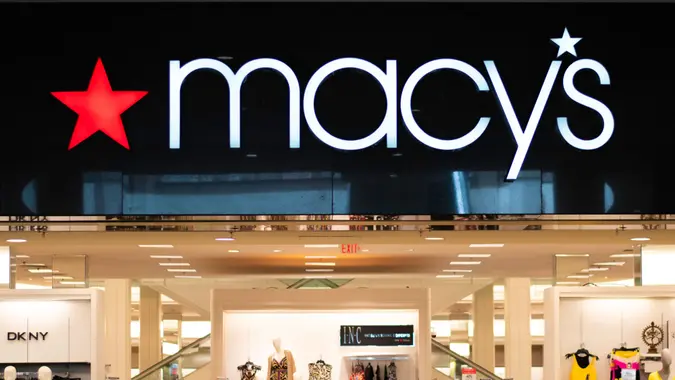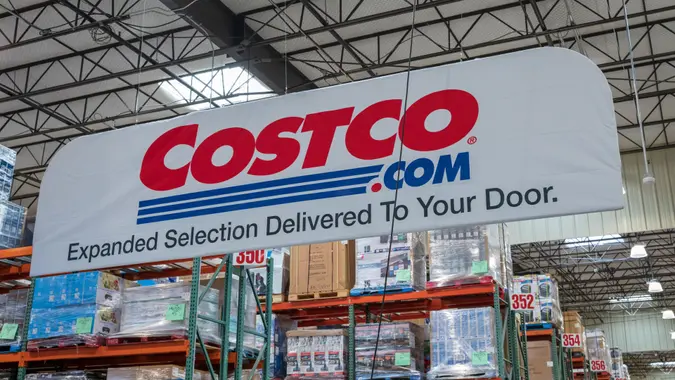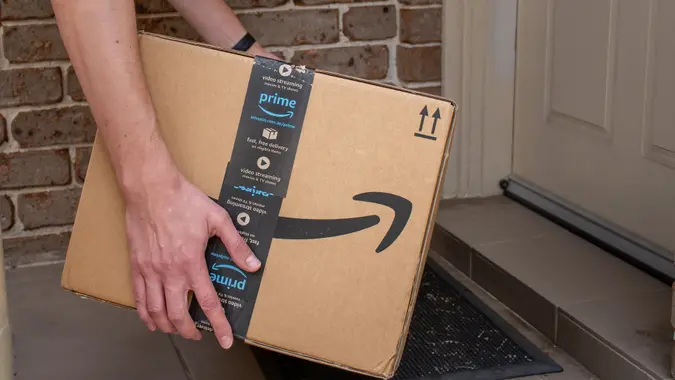Here’s What ChatGPT Said the True Cost of Having a Baby Will Be in 2026

Commitment to Our Readers
GOBankingRates' editorial team is committed to bringing you unbiased reviews and information. We use data-driven methodologies to evaluate financial products and services - our reviews and ratings are not influenced by advertisers. You can read more about our editorial guidelines and our products and services review methodology.

20 Years
Helping You Live Richer

Reviewed
by Experts

Trusted by
Millions of Readers
Planning for a baby means planning for a lifetime of happiness and adventures — and also, a lifetime of massive expenses. And it’s just getting higher! I asked ChatGPT to estimate what having a baby will actually cost in 2026, and the AI broke down numbers that might shock prospective parents.
The short answer: There’s no single fixed number. The cost depends heavily on location, healthcare coverage, child care choices and lifestyle. But ChatGPT crunched recent data to provide realistic ranges.
The First Year Alone Can Cost $15,000 to $30,000
ChatGPT estimated that birth through the first year of life will run $15,000 to $30,000 for middle-income households in reasonably high-cost areas. That covers prenatal care, delivery (assuming no major complications), baby essentials, first-year child care if needed, health checkups and feeding supplies.
In expensive metro areas, the artificial intelligence warned that number could hit $30,000 to $40,000 or higher. Cities like New York, San Francisco or Seattle push costs up dramatically compared to smaller markets.
The birth and delivery portion alone varies wildly based on insurance and complications. ChatGPT noted that out-of-pocket maximums for health plans are rising, with 2026 plans likely carrying higher caps than current options.
Birth Through Age 18 Hits $350,000 to $450,000
The AI projected raising a child from birth through age 18 will cost $350,000 to $450,000, excluding college. That estimate depends heavily on location, child care needs, housing costs, inflation and how many “extras” like activities and travel you include.
ChatGPT referenced current data showing families spend between $297,000 and $332,000 raising a child to 18, depending on income and geography. Projecting forward to 2026 with continued inflation, those numbers climb to the $350,000 to $450,000 range.
Annual costs per child run around $20,000 or more for essentials like food, housing, healthcare and child care. Multiply that by 18 years and add inflation, and you’re looking at a down payment on a house spent on raising one kid.
What Drives These Costs Up
ChatGPT broke down the major expense categories affecting the total.
Medical costs for prenatal care, birth and postpartum care rise annually. Insurance deductibles and out-of-pocket maximums keep increasing, meaning families pay more even with coverage. Complications during pregnancy or delivery can push costs far higher.
Newborn essentials like cribs, car seats, strollers, clothing, diapers and formula add up fast. These costs rise with inflation, and supply chain issues can drive prices even higher. Choosing luxury or brand-name gear versus budget options creates massive cost variations.
Housing becomes a major expense. Many families need more space for a baby, require childproofing or move to more kid-friendly areas. The AI noted that housing costs are rising rapidly in many places, and if rent or mortgage payments increase, baby costs balloon.
Child care ranked as one of the fastest-rising expenses. Day care, nannies or other care options vary wildly by location and quality. High demand combined with rising wages and regulations push child care costs upward year after year.
Food, clothing and ongoing healthcare (routine checkups, vaccinations, sick visits, dental care) all face continued inflation. As babies grow into toddlers and kids, food and clothing needs expand while medical care remains constant.
Transportation and extras like larger cars, additional car seats, toys, books and classes add discretionary but still significant costs, especially in expensive metro areas.
What Could Push Costs Even Higher
ChatGPT identified several factors that could drive baby costs above the baseline estimates.
Big increases in healthcare premiums, deductibles or insurance costs would immediately raise expenses. Very high-cost child care or choosing private schooling multiplies annual spending dramatically.
Living in expensive cities or high cost-of-living regions can double or triple costs compared to lower-cost areas. Lifestyle choices like premium baby gear, frequent travel or expensive activities add thousands annually.
Unexpected medical issues or pregnancy complications represent the biggest wild card. A complicated delivery, NICU stay or ongoing health issues for mother or baby can add tens of thousands in out-of-pocket expenses even with insurance.
College Costs Not Included
The $350,000 to $450,000 estimate explicitly excludes higher education costs. ChatGPT noted that college adds “another large chunk” ranging from tens of thousands to over $100,000 depending on school type.
Public in-state universities might add $40,000 to $80,000 for four years. Private universities can exceed $200,000 for a bachelor’s degree. Those costs come on top of the 18-year raising expenses, not included within them.
The Reality Check
ChatGPT’s estimates align with financial planning advice that having a baby is one of life’s most expensive decisions. The first-year costs alone equal a decent used car. The 18-year total matches or exceeds what many people pay for housing over the same period.
The AI emphasized that these are middle-income household estimates. Lower-income families face the same or higher costs with fewer resources, while wealthy families can easily spend double or triple through premium choices at every stage.
Geographic variation matters enormously. Having a baby in rural Mississippi costs dramatically less than in Manhattan or San Francisco, with differences of $100,000 or more over 18 years based purely on location.
More From GOBankingRates
 Written by
Written by  Edited by
Edited by 
























